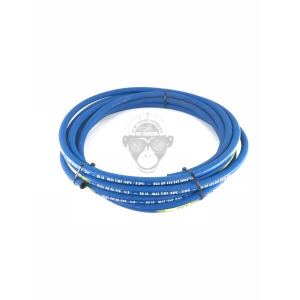Every mechanical part needs maintenance, so do the hydraulic pumps. Certainly, the correct maintenance can keep mechanical items under excellent conditions. Otherwise, the incorrect maintenance may result in many issues which will then trigger more serious issues. You ought to do some preventive maintenance to prevent some unneeded failures.

How to repair a hydraulic pump.
The preventive maintenance of the hydraulic pump and hydraulic fittings includes many actions. It is cautioned that the maintenance or repair treatments must be done after detaching the pump from the power supply. The following are some things related to the preventive maintenance of the hydraulic pump.
Of all, you ought to inspect the hydraulic fluid level. The correct oil level is 1/2 from the top of the fill hole when all wrenches are pulled back. You need to inspect the oil level in the tank routinely. You must drain pipes, flush, and fill up the tank with top-quality hydraulic oil after a particular period of use.
Cleaning maintenance is a vital treatment for preventive maintenance. Under this action, you must seal all unused couplers with thread protectors, and keep all pipe connections without dirt and gunk and the pump’s external surface as devoid of dirt as possible. The devices linked to the pump should be kept clean.
You must drain pipes and flush the tank. Before the pump interior is removed from the tank, you must clean the pump outside. There are some things to follow.
- Remove the 10 screws attaching the motor and pump assembly to the tank. You ought to make certain that you do not harm the gasket or bump the filter or pressure managing valves when raising the pump and motor of the tank.
- Clean the within the tank and fill with appropriate flushing oil.
- Place the motor and pump assembly back onto the tank, and protect with 2 machine screws at corners of the housing. After then, you ought to run the pump for a number of minutes. At last, you need to fill the tank with hydraulic oil. Place the pump and motor assembly (with gasket) on the tank, and thread the 10 screws.
In addition to the above-discussed actions, the oil must be contributed to the tank. Before doing this, wrench needs to be completely pulled back and the power supply needs to be detached.
Focusing on Physical damage.
It is an evaluated figure that 80% of the hose pipe failures are the result of external physical damage. Most of the times squashing, pulling, kinking, abrasion and so on causes tube failure. The brushing of tubes either against each other or against the adjacent surface areas (abrasion) is normally the most standard form of damage. A basic option to all these issues is listening. A little attention and prompt check can assist avoid all these issues. Routing needs to be paid special attention while the setup of the replacement hose pipe. Polythene spiral covers can also be used to prevent abrasion. The security of clamps must be also taken note.
